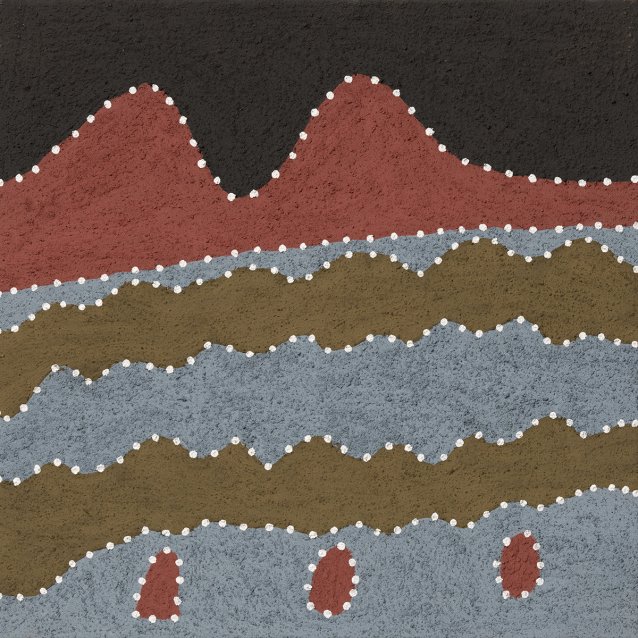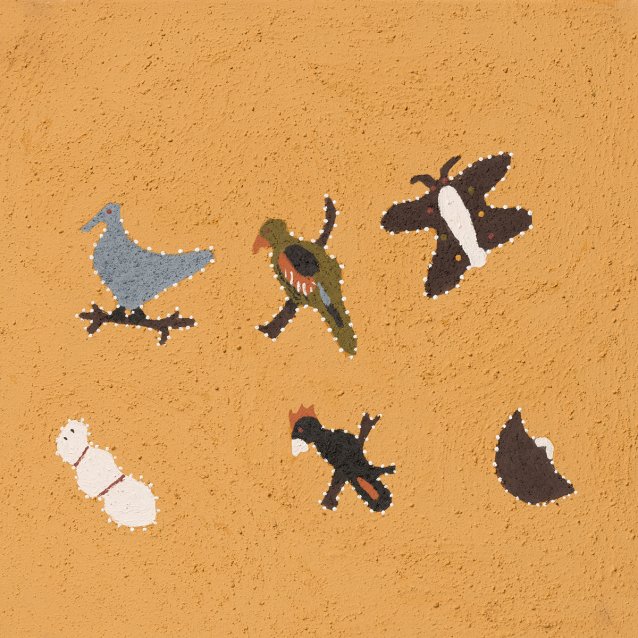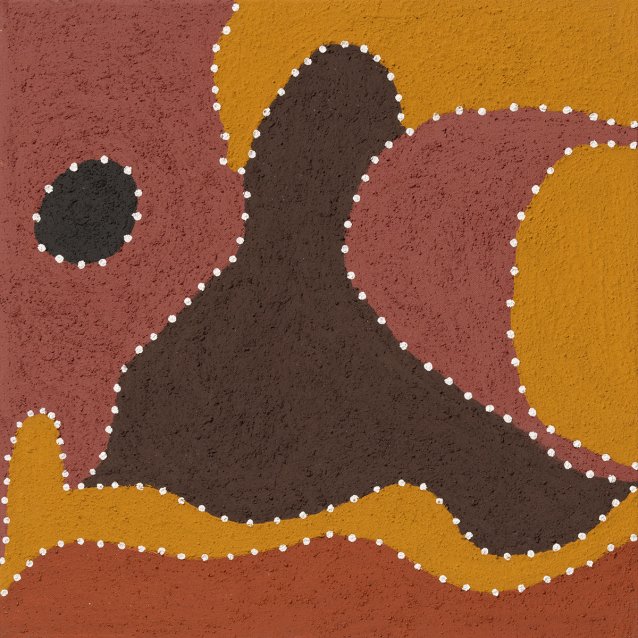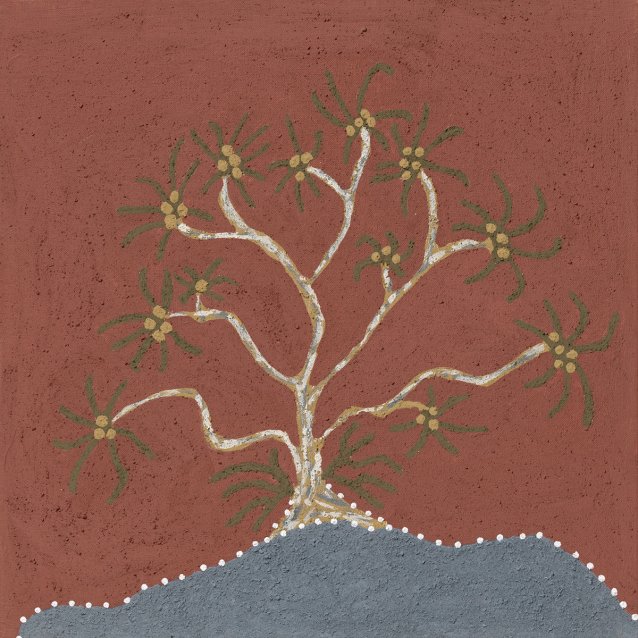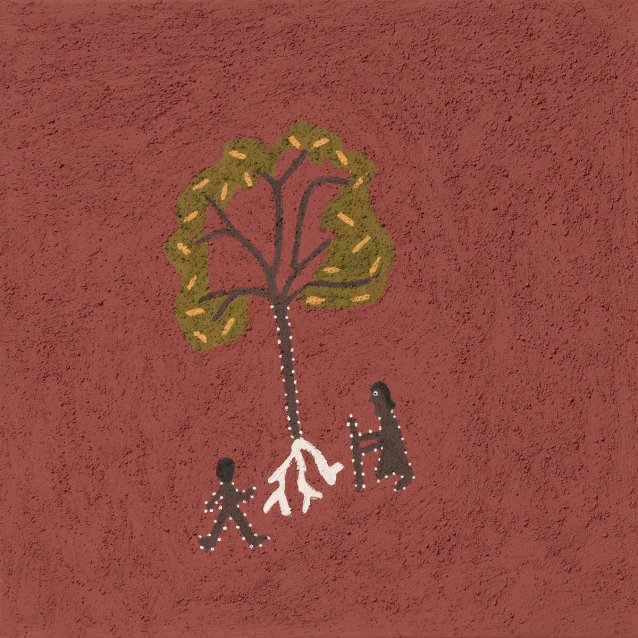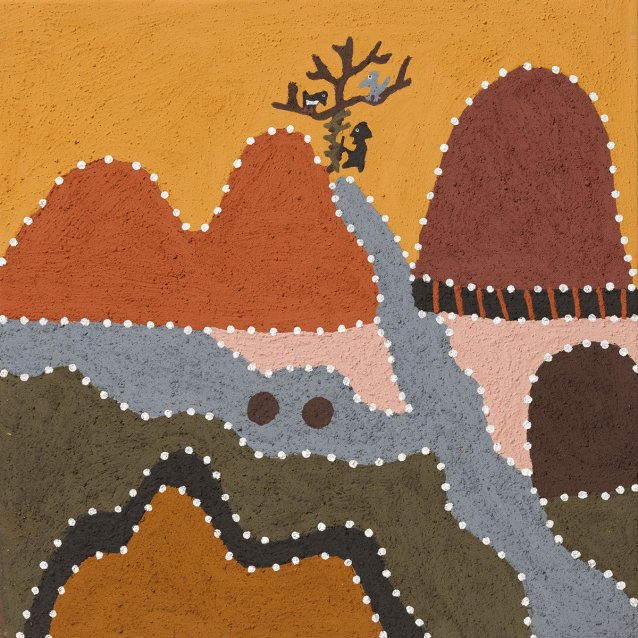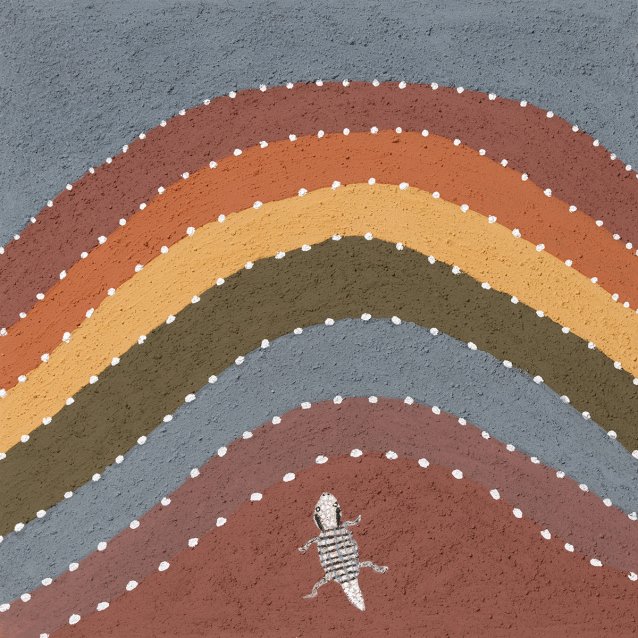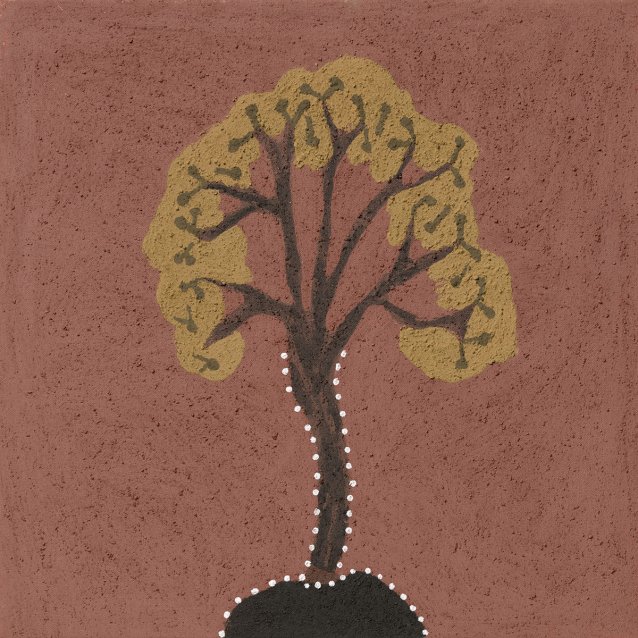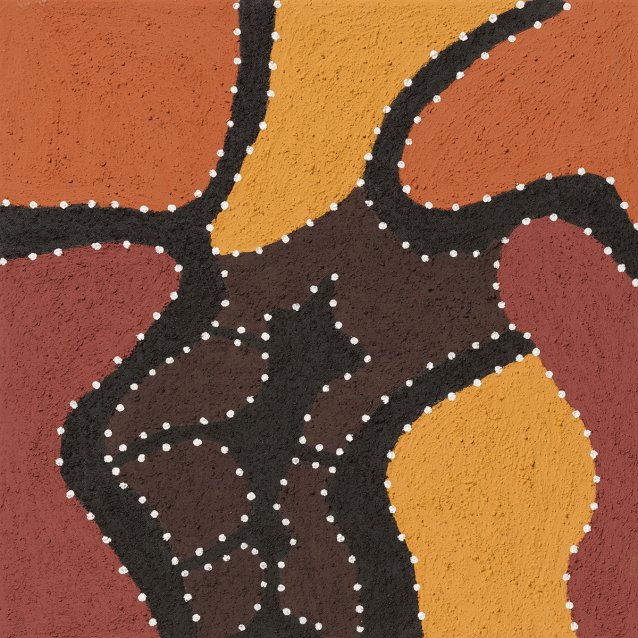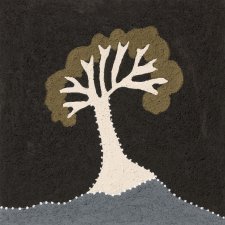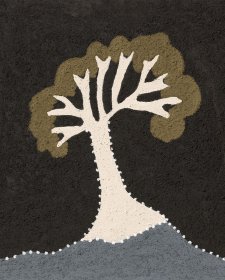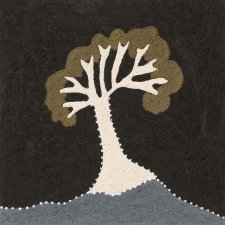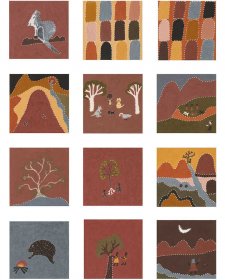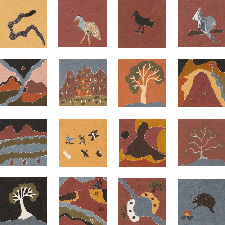“My great-great grandmother, she told that two birds, they not strangers. They like a family to her. And she sang that song ‘goorra-goorral bomangerri jeggejegge bomangerri jillijilyerji oobujoobuj ngenaninggi’.”
This is the special hill (brown one to the top right), when people pass away, that hill makes noise (rumbles). The two circles in the centre – gardiya used to call them tanks but they are the dreamtime story for the turtle who bin carrying that crocodile in paperbark, looking for water til he bin go down south and find water in la Ord River, in another country. The two circles are where the turtle was looking for water in my country, Violet Valley, and left those marks with his digging stick, looking for water.
This story takes place in Violet Valley, when Shirley’s father’s grandmother was still alive.
The story about Shirley’s great-great grandmother took place on Goorra-Goorral country, or stormbird and Willy wagtail country, because those birds have always lived there. Shirley’s great-great grandmother, Mamigool aka curlew, would dig up the roots of a creeper bush potato plant that grows in that country. She sang a special song to the birds, telling them they were like her family. That song has been passed down to Shirley from her great-great grandmother to her father, who sang it to young Shirley. Shirley never met Mamigool, but she knows about her, and knows her special song. Nangari is the skin name for Wangganal (the crow) and it is also Shirley’s skin. In Gija kinship systems, Nangari helps define who Shirley is within her wider family and community, and how others may relate to her.
